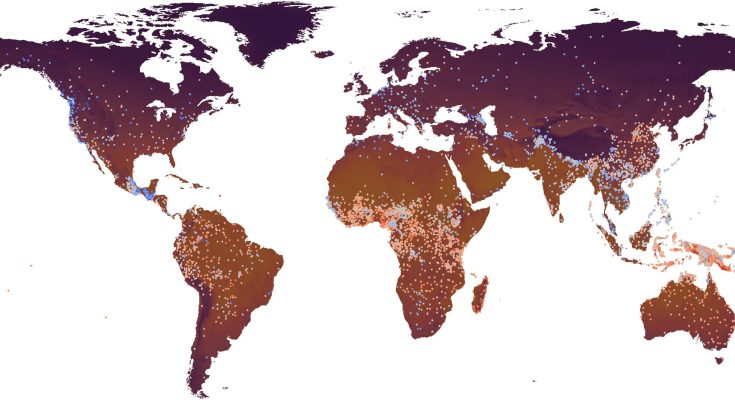#LinguisticsStudy; #SoundWaves; #WorldRecord
In study published on Dec 5, in the online journal PNAS Nexus, Kiel linguist Dr. Søren Wichmann, together with colleagues from China, demonstrates that average ambient temperatures influence the loudness of certain speech sounds. “Generally speaking, languages in warmer regions are louder than those in colder regions,” says Dr. Wichmann.
Languages are a key factor in human societies. They connect people, serve as a vehicle to pass on knowledge and ideas, but they also distinguish between different groups of people. Languages can therefore tell us a lot about the societies that use them. As languages are constantly changing, it is important to know the factors that play a role in this. Scientists can then reconstruct past processes on the basis of languages.
The physics of air influences speaking and hearing
The basic idea behind the study is that we are surrounded by air when we speak and listen. Spoken words are transmitted through the air as sound waves. The physical properties of air therefore influence how easy it is to produce and hear speech.
“On the one hand, the dryness of cold air poses a challenge to the production of voiced sounds, which require vibration of the vocal cords. On the other hand, warm air tends to limit unvoiced sounds by absorbing their high-frequency energy,” explains Dr. Wichmann.
These factors could favor a higher volume of certain speech sounds in warmer climates, known as sonority in scientific terms.
Extensive speech database helps with the analysis
Dr. Wichmann and his colleagues used the Automated Similarity Judgment Program (ASJP) database to test whether these factors actually have an effect on the development of languages. It currently contains the basic vocabulary of 5,293 languages and is constantly being expanded with the support of the ROOTS Cluster of Excellence.
Dr. Wichmann and his colleagues found that languages that occur around the Equator in particular have a high average sonority, languages in Oceania and Africa have the highest corresponding index. In contrast, the world record for low sonority belongs to the Salish languages on the northwest coast of North America.
However, there are some exceptions to this trend. For example, some languages in Central America and on the Southeast Asian mainland have a rather low mean sonority, even though they are spoken in very warm regions.
“Overall, however, we were able to establish a clear relationship between the mean sonority of language families and the mean annual temperature,” emphasizes Dr. Wichmann. The exceptions suggest that the effects of temperature on sonority develop only slowly and only shape the sounds of a language over centuries or even millennia.
New research approaches to phenomena of human societies
Scientists are currently intensively discussing the extent to which the environment shapes languages. “For a long time, research assumed that linguistic structures are self-contained and are not influenced in any way by the social or natural environment. More recent studies, including ours, are beginning to question this,” says Dr. Wichmann.
Studies like this could also open new paths to insights into human societies, for example on the topic of migration. “If languages adapt to their environment in a slow process lasting thousands of years, then they carry some clues about the environment of their predecessor languages,” says the Kiel linguist.





